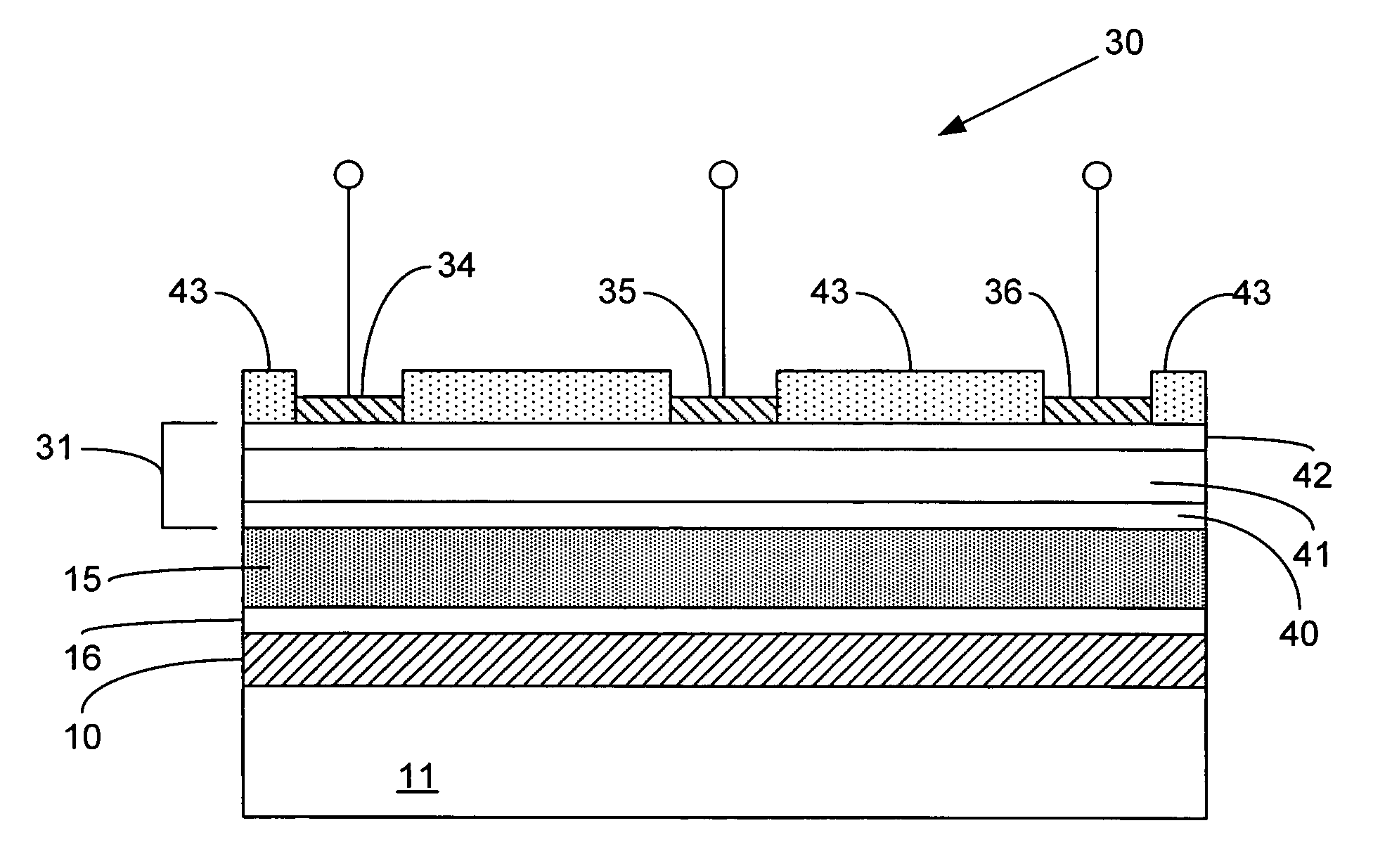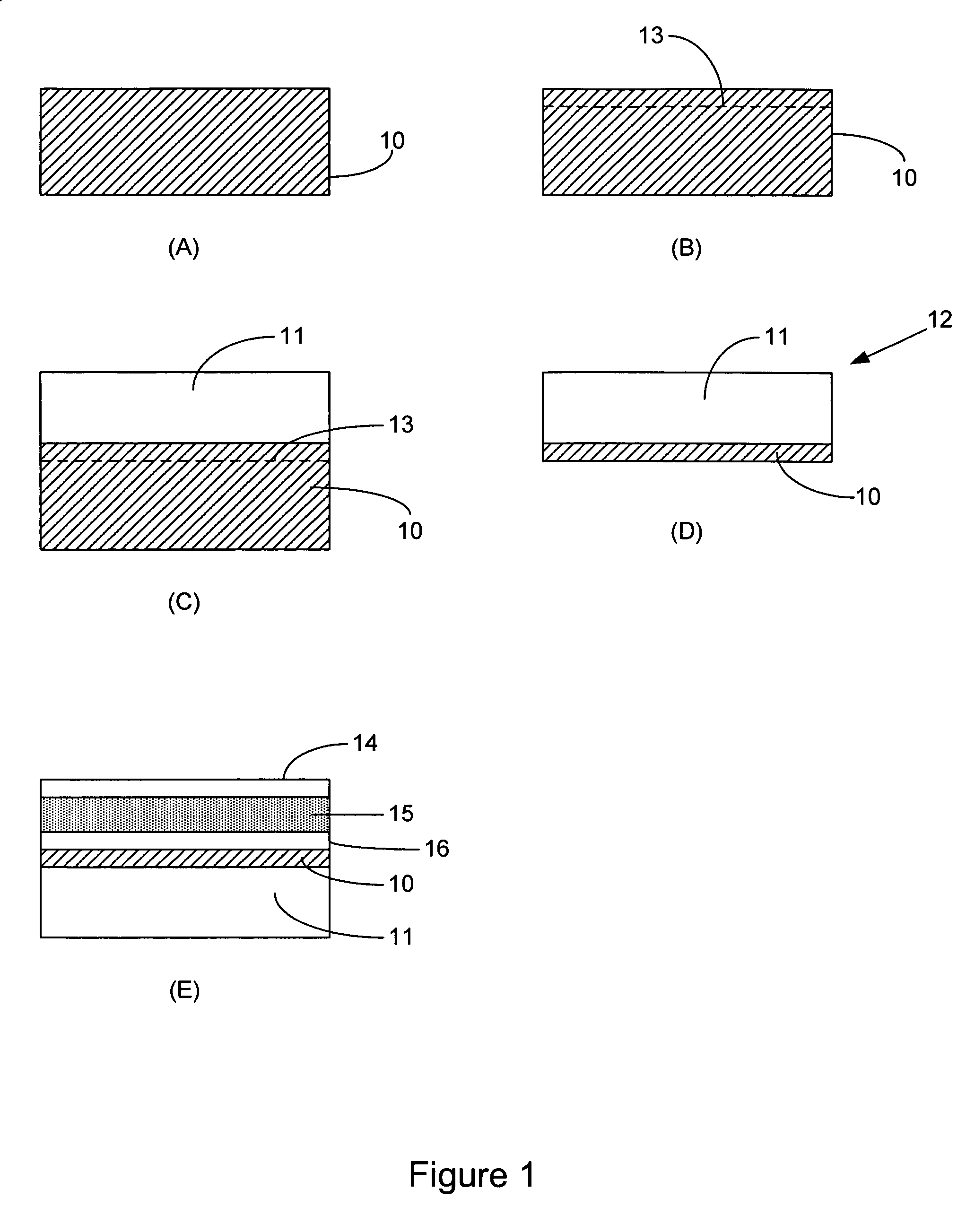Silicon carbide on diamond substrates and related devices and methods
a silicon carbide and diamond technology, applied in semiconductor devices, semiconductor/solid-state device details, electrical apparatus, etc., can solve the problems of reducing device performance, excessive heat can raise several problems, and the material of simiconductor materials cannot penetrate higher-power high-frequency applications to the extent desirable, so as to reduce the junction temperature and improve reliability, the effect of increasing the power density during operation
- Summary
- Abstract
- Description
- Claims
- Application Information
AI Technical Summary
Benefits of technology
Problems solved by technology
Method used
Image
Examples
Embodiment Construction
[0026]It will be understood that the advantages of the invention as described herein are neither exclusive of one another nor are they necessarily cumulative. Thus, by reducing the junction temperature, higher power density can be achieved at a given rated reliability, or the reliability can be increased at a previously-available rated power density, or some combination of these (and other) advantages can be achieved.
[0027]In a first embodiment, the invention is a method of forming a high-powered device in wide bandgap materials with reduced junction temperature, higher power density during operation, and improved reliability at a rated power density. The method is illustrated schematically in FIG. 1 which includes sub-Figures (A) through (E). FIG. 1 illustrates a silicon carbide wafer 10. In preferred embodiments and as is most useful for device structures, the silicon carbide wafer or substrate 10 is a single crystal layer that provides a highly suitable substrate for the Group II...
PUM
| Property | Measurement | Unit |
|---|---|---|
| thick | aaaaa | aaaaa |
| thick | aaaaa | aaaaa |
| Thick | aaaaa | aaaaa |
Abstract
Description
Claims
Application Information
 Login to View More
Login to View More - R&D
- Intellectual Property
- Life Sciences
- Materials
- Tech Scout
- Unparalleled Data Quality
- Higher Quality Content
- 60% Fewer Hallucinations
Browse by: Latest US Patents, China's latest patents, Technical Efficacy Thesaurus, Application Domain, Technology Topic, Popular Technical Reports.
© 2025 PatSnap. All rights reserved.Legal|Privacy policy|Modern Slavery Act Transparency Statement|Sitemap|About US| Contact US: help@patsnap.com



